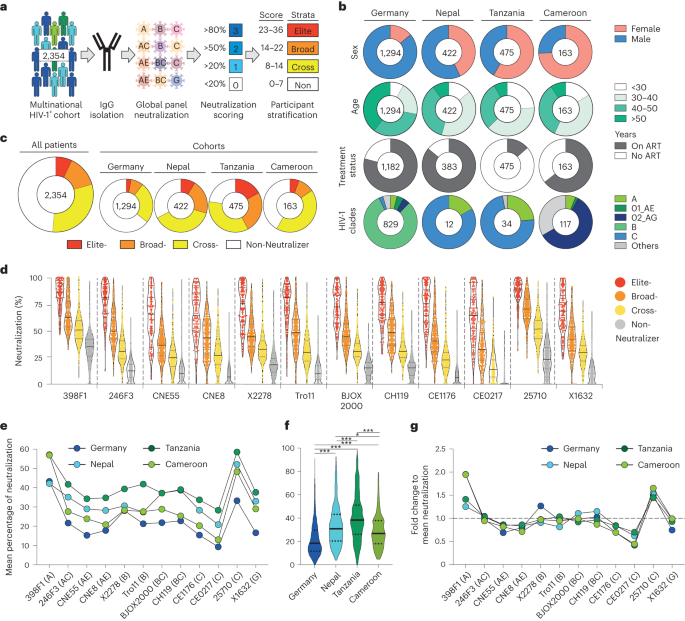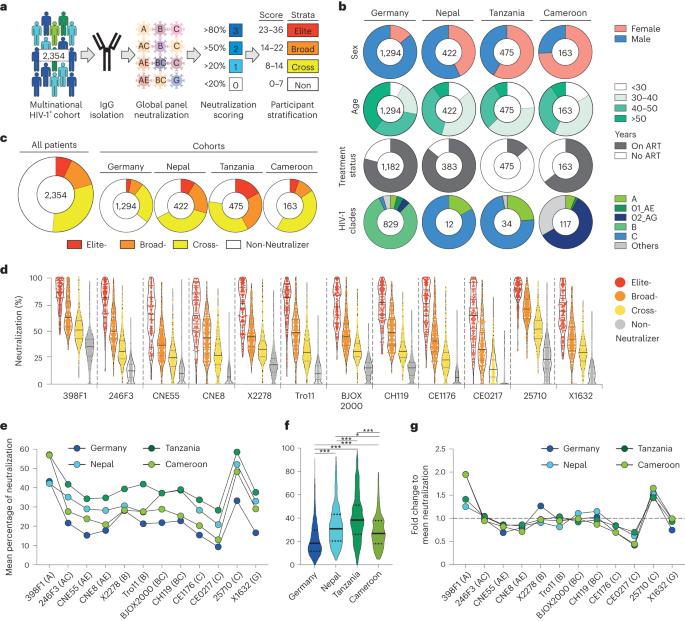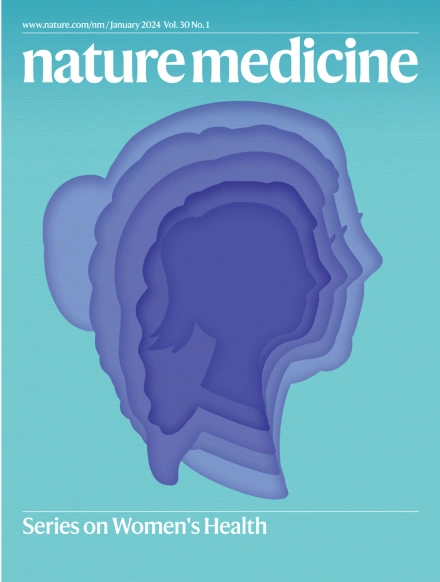HIV-1中和的动态和持久性由病毒复制决定。
IF 58.7
1区 医学
Q1 BIOCHEMISTRY & MOLECULAR BIOLOGY
引用次数: 0
摘要
预防感染的人类免疫缺陷病毒1型(HIV-1)-中和抗体(nab)是HIV疫苗发现的主要目标。但是,由于目前还没有引发nAb的疫苗,只有来自HIV-1中和者(即自然产生广泛而有效的nAb的HIV-1患者)的数据才能了解人类nAb反应的动态和持久性,这对未来HIV-1疫苗方案的设计至关重要。为了解决这个问题,我们评估了2,354名接受或不接受抗逆转录病毒治疗(ART)的HIV-1患者的HIV-1中和免疫球蛋白G (IgG)。感染非进化支B病毒、CD4+ T细胞计数-1、停止抗逆转录病毒治疗和较长时间停止抗逆转录病毒治疗是更有效和更广泛的中和作用的独立预测因素。在纵向分析中,我们发现无病毒血症或低水平病毒血症患者的nAb半衰期分别为9.3年和16.9年,新开始抗逆转录病毒治疗的患者的nAb半衰期为4.0年。最后,在一种有效的HIV-1中和剂中,我们发现抗逆转录病毒治疗启动后血清nab和编码nab的记忆B细胞的比例较低,这表明抗原退出后血清中和活性降低是由于nab水平较低。这些结果共同表明,即使在低抗原水平下,HIV-1中和反应也可以持续数年,这表明HIV-1疫苗可能引发持久的nAb反应。本文章由计算机程序翻译,如有差异,请以英文原文为准。


Dynamics and durability of HIV-1 neutralization are determined by viral replication
Human immunodeficiency virus type 1 (HIV-1)-neutralizing antibodies (nAbs) that prevent infection are the main goal of HIV vaccine discovery. But as no nAb-eliciting vaccines are yet available, only data from HIV-1 neutralizers—persons with HIV-1 who naturally develop broad and potent nAbs—can inform about the dynamics and durability of nAb responses in humans, knowledge which is crucial for the design of future HIV-1 vaccine regimens. To address this, we assessed HIV-1-neutralizing immunoglobulin G (IgG) from 2,354 persons with HIV-1 on or off antiretroviral therapy (ART). Infection with non-clade B viruses, CD4+ T cell counts <200 µl−1, being off ART and a longer time off ART were independent predictors of a more potent and broad neutralization. In longitudinal analyses, we found nAb half-lives of 9.3 and 16.9 years in individuals with no- or low-level viremia, respectively, and 4.0 years in persons who newly initiated ART. Finally, in a potent HIV-1 neutralizer, we identified lower fractions of serum nAbs and of nAb-encoding memory B cells after ART initiation, suggesting that a decreasing neutralizing serum activity after antigen withdrawal is due to lower levels of nAbs. These results collectively show that HIV-1-neutralizing responses can persist for several years, even at low antigen levels, suggesting that an HIV-1 vaccine may elicit a durable nAb response. Human immunodeficiency virus type 1 (HIV-1)-neutralizing responses can persist for several years, even at low antigen levels, suggesting that an HIV-1 vaccine may be able to elicit a durable antibody response.
求助全文
通过发布文献求助,成功后即可免费获取论文全文。
去求助
来源期刊

Nature Medicine
医学-生化与分子生物学
CiteScore
100.90
自引率
0.70%
发文量
525
审稿时长
1 months
期刊介绍:
Nature Medicine is a monthly journal publishing original peer-reviewed research in all areas of medicine. The publication focuses on originality, timeliness, interdisciplinary interest, and the impact on improving human health. In addition to research articles, Nature Medicine also publishes commissioned content such as News, Reviews, and Perspectives. This content aims to provide context for the latest advances in translational and clinical research, reaching a wide audience of M.D. and Ph.D. readers. All editorial decisions for the journal are made by a team of full-time professional editors.
Nature Medicine consider all types of clinical research, including:
-Case-reports and small case series
-Clinical trials, whether phase 1, 2, 3 or 4
-Observational studies
-Meta-analyses
-Biomarker studies
-Public and global health studies
Nature Medicine is also committed to facilitating communication between translational and clinical researchers. As such, we consider “hybrid” studies with preclinical and translational findings reported alongside data from clinical studies.
 求助内容:
求助内容: 应助结果提醒方式:
应助结果提醒方式:


